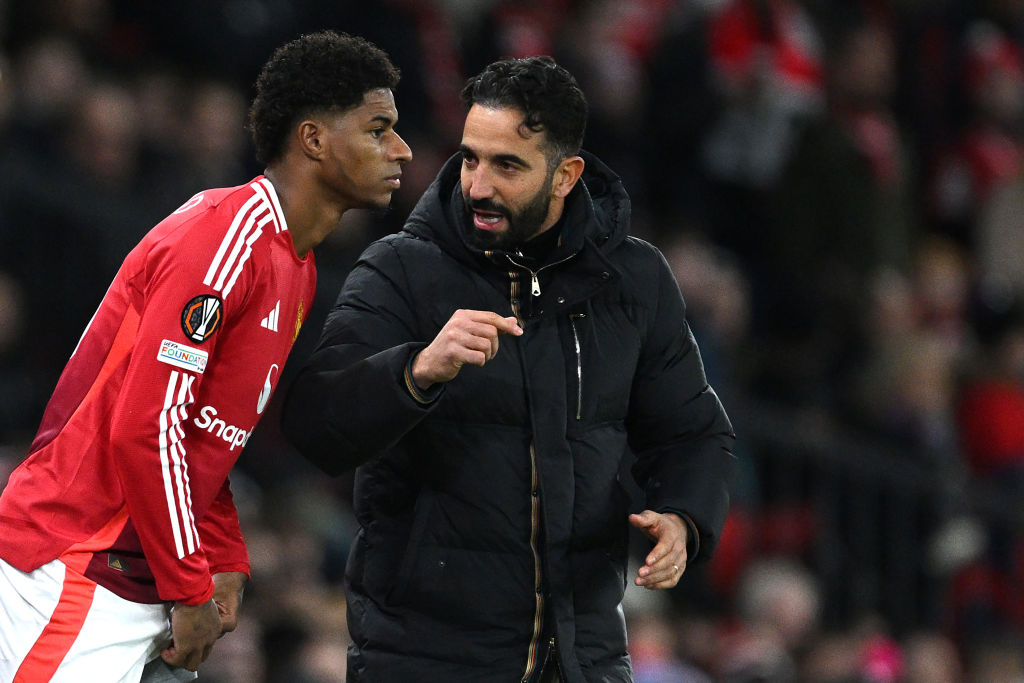Mourinho vs Van Gaal: How Man United's new tactics compare
FFT's Chris Flanagan was in the press box at Bournemouth's Vitality Stadium on Sunday to analyse Jose Mourinho's new-look Manchester United using Stats Zone - FREE on iOS and Android...
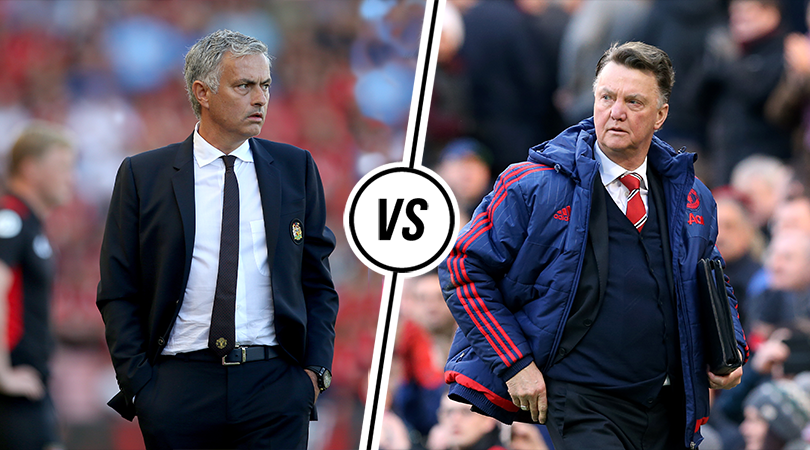
Jose Mourinho's new-look Manchester United got off to a winning start on Sunday afternoon. And if the Red Devils weren't at their most convincing there were roots for optimism.
FourFourTwo was at the game to analyse how United have changed under their new management.
Here are our findings using the award-winning Stats Zone analysis app…
1. United did more with possession
Under Louis van Gaal, Manchester United were known for dominating possession but not always doing a lot with it. Often it was possession for possession's sake, with no cutting edge or chances created at the end of it. Things were always going to be different under Jose Mourinho and it was illustrated perfectly in United's opening match of the Premier League season.
Under Van Gaal last season, United had 56 per cent possession at Bournemouth, completing 389 passes to 300 - yet they lost 2-1. This time at the Vitality Stadium, United actually only had 49 per cent possession in the first half, but they led 1-0 thanks to Juan Mata's first league goal under the management of Jose Mourinho. Mata's first spell with the Portuguese boss at Chelsea delivered only a League Cup strike against Arsenal.
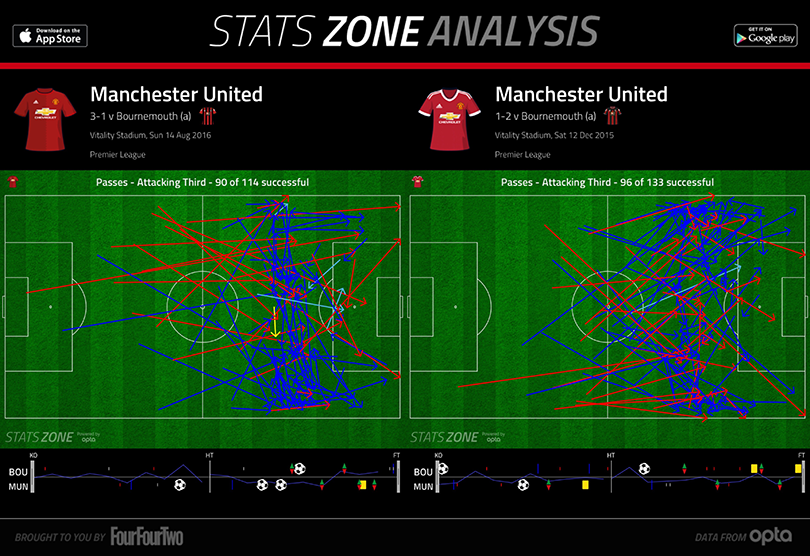
Mourinho's side had more of the game in the second half and finished the match with 53 per cent possession, and 487 passes to Bournemouth's 411. Even with that improved second period, United completed only 90 passes in the attacking third in the entire match, compared to 96 under Van Gaal during last season's fixture. Crucially, they made their attacking play count in a way that Van Gaal's team often didn't - adding two more goals in the second half to kill off the match.
Get FourFourTwo Newsletter
The best features, fun and footballing quizzes, straight to your inbox every week.
2. Fewer sideways passes, but only just
Van Gaal's attacking strategy often involved laborious build-up play and a succession of sideways passes. When United faced Bournemouth at home in the final match of last season, only 40% of their massive 612 passes went forward with 34% going backwards and 26% square.
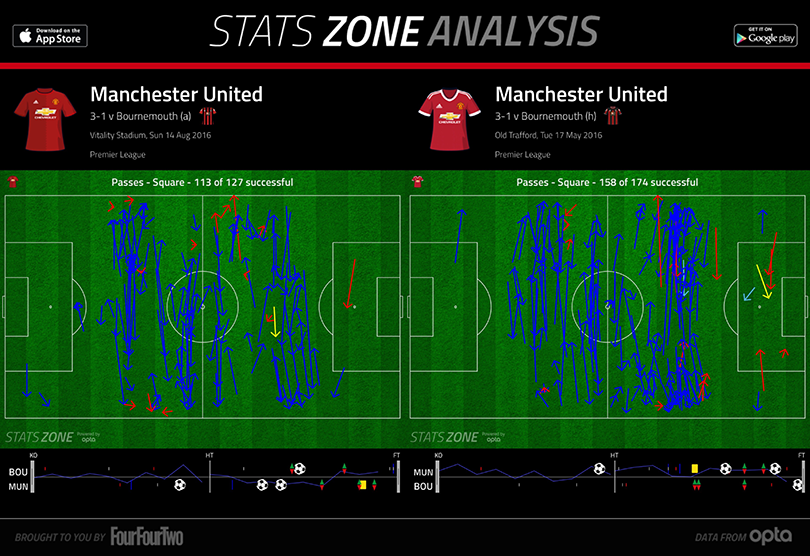
This time, a slightly smaller percentage of passes went square (23%) but 40% went backwards and only 37% went forwards. That might be a surprising statistic, given Mourinho's preference for a less ponderous attacking style. The first half was particularly slow-paced, not helped by the warm weather of the opening weekend of the season. United's new boss will be eager to speed up that build-up play in the weeks to come. Paul Pogba could help.
3. Improved service to the forwards
One of the big problems last season was the complete lack of service that United's lone striker often received. Anthony Martial played up front for Van Gaal's side in their loss at Bournemouth last season and received just 23 passes. Wayne Rooney similarly seemed isolated in various fixtures.
Ibrahimovic still seemed too isolated on occasions in the first half on the opening weekend of the Premier League season, and improvements can be made. But in total he received 40 passes, a much improved level of service, and really came to life in the second half. The Swede showed he has the quality to make the most of that service, striking home a stunning third goal to finish the game off.
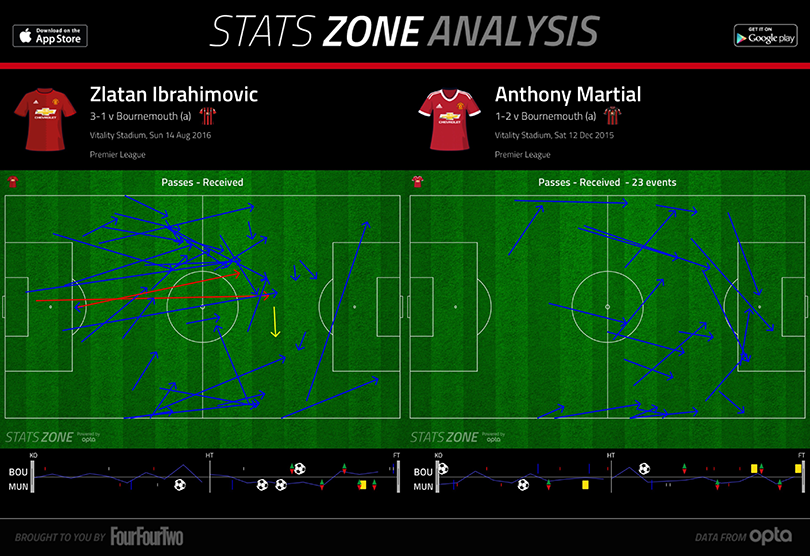
"The second half was the complete performance," Mourinho said afterwards. "The attacking players were all in the game. The third goal was a beautiful strike."
Rooney received 55 passes in the game, enabling him to influence the match and also score United's second goal. Mourinho's side were clinical - they had 11 shots, putting seven of them on target and three of them into the net.
4. Centre-backs spent less time on ball
In terms of formation, United didn't play in a radically different way to the way they played for most of last season - a 4-2-3-1, with two holding midfielders shielding the defence.
As a result, the influence maps show only subtle differences. As in last season's match at Bournemouth, United frequently used their full-backs, who got forward whenever they could. Likewise the pass stats were dominated by the two sitting midfielders, with Marouane Fellaini completing an impressive 75 of 76 passes in this game.
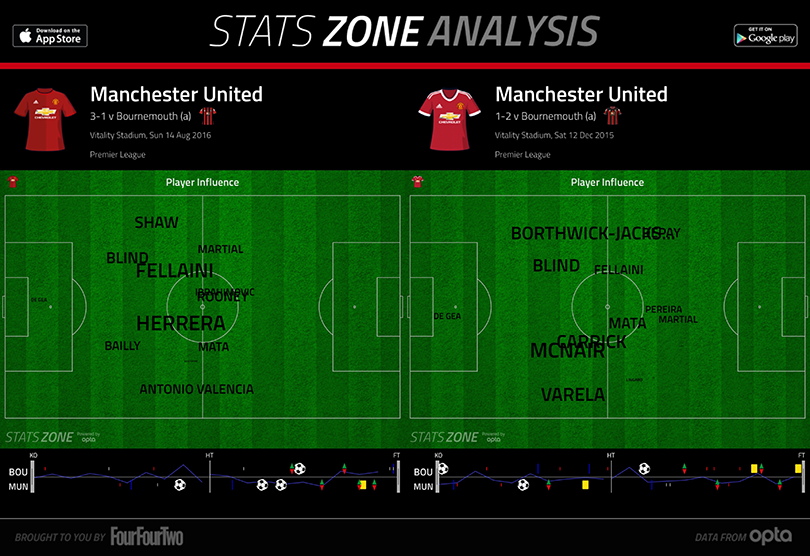
The most notable difference on the influence maps was the fact that the two centre-backs were on the ball much less. Last season Paddy McNair received 52 passes and Daley Blind 50, each around 13% of United's total completed passes.
This time Eric Bailly received only 30 passes and Blind 51 - around 6% and 10% of United's total completed passes. Mourinho prefers his attacking players to have the ball instead, as illustrated by the greater service to Rooney and Ibrahimovic.
5. United pressed higher up the field
It was attack rather than defence that was Manchester United's weakness under Louis van Gaal, and Mourinho has usually put together sides with a strong defensive record too. Their methods, though, are a little different.
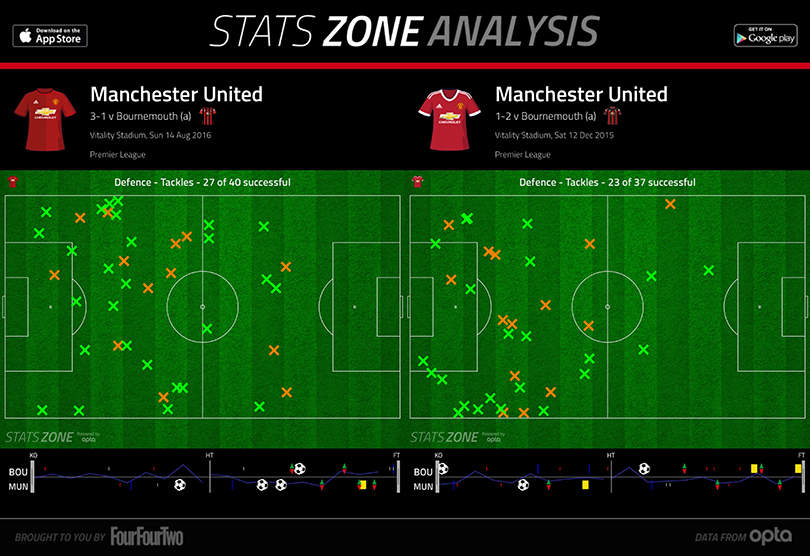
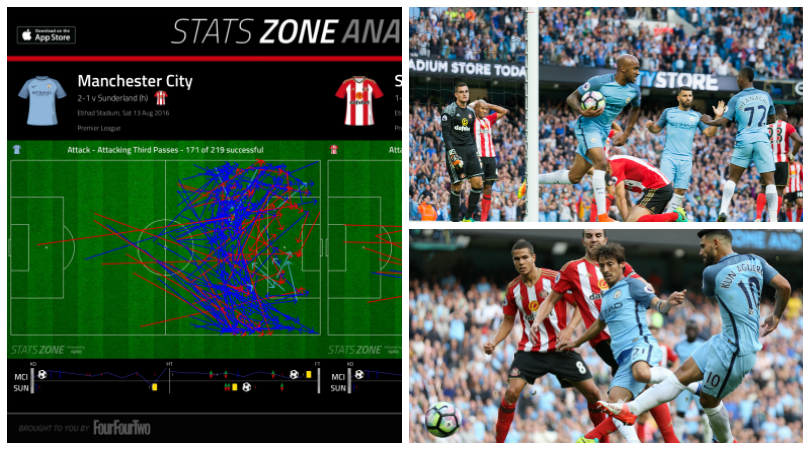
When United lost at Bournemouth last season, they attempted 37 tackles but only four of them were in the opposition half. Likewise, of their 10 interceptions, only one was beyond the halfway line.
Mourinho's side showed signs of pressing higher up the field in this game. They attempted 40 tackles, 10 of them in the Bournemouth half. Three of their 14 interceptions were beyond halfway.
Analyse Bournemouth 1-3 Man United yourself using Stats Zone
STATS ZONE Free on iOS • Free on Android

Chris joined FourFourTwo in 2015 and has reported from 20 countries, in places as varied as Jerusalem and the Arctic Circle. He's interviewed Pele, Zlatan and Santa Claus (it's a long story), as well as covering the World Cup, Euro 2020 and the Clasico. He previously spent 10 years as a newspaper journalist, and completed the 92 in 2017.
